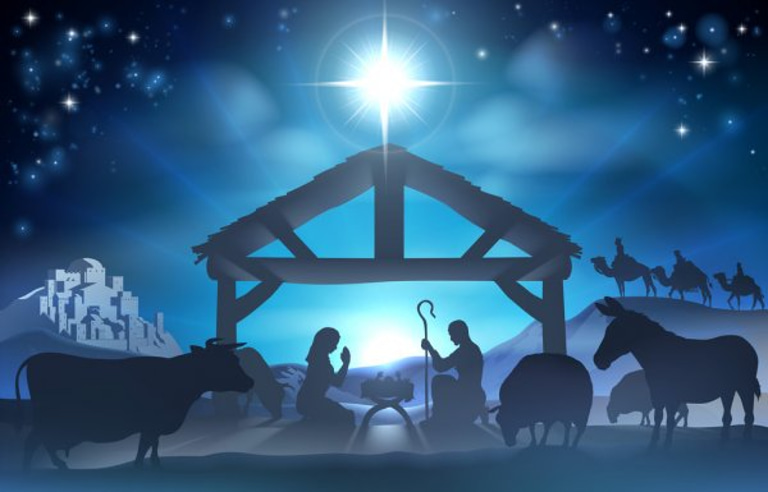Outdoor Nativity Sets 2025: Complete Guide & Display Tips
Discover the best outdoor nativity sets of 2025 — weatherproof, beautifully lit, and perfect for any budget. Create a durable, meaningful Christmas display that shines all season!
8/7/202529 min read
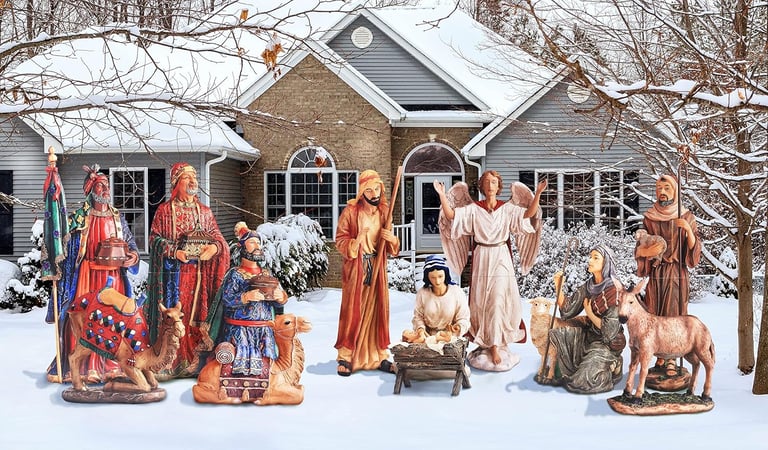

FAQ: Outdoor Nativity Sets 2025
1. What types of outdoor nativity sets should I consider?
Choose from full-scene traditional sets, minimalist silhouettes, inflatable quick‑setup options, rustic wooden designs, or dramatic life‑size plastic displays—each offering its own blend of style, convenience, and impact.
2. Which materials are best for outdoor durability?
Look for weatherproof materials like high-grade plastic, UV-treated PVC, powder-coated metal, sealed hardwoods, or durable resin. Avoid water‑resistant-only items if your set will endure winter weather.
3. How can I light and place my display effectively and safely?
Use LED spotlights for focused illumination and string lights to accent structures—preferably with timers or smart plugs for ease. Anchor your display with stakes or weights, position it with visibility and meaning in mind, and integrate it thoughtfully with other décor for a reverent and harmonious presentation.
Types of Outdoor Nativity Sets: Finding What Fits Your Style and Space
Best Materials for Outdoor Nativity Sets: What Actually Holds Up in the Real World?
Outdoor Nativity Lighting Options: How to Make It Shine Without Losing Your Mind (or Blowing a Fuse)
Where to Place Your Nativity Scene: Making It Meaningful and Practical
Budget-Friendly Outdoor Nativity Displays: Beautiful Doesn’t Have to Mean Expensive
Premium & Life-Size Nativity Sets Worth the Investment
Setup, Storage, and Maintenance Tips: Protecting Your Nativity for the Long Haul
Accessorizing Your Nativity Scene: Enhancing the Story Without Losing the Focus
Outdoor Nativity Safety & Local Ordinances: Keeping It Legal, Safe, and Neighbor-Friendly

✨ Introduction
“The light shines in the darkness, and the darkness has not overcome it.” – John 1:5
Christmas lights dazzle. Blow-ups bounce. But nothing tugs the heartstrings quite like a glowing nativity scene under a blanket of stars.
If you're thinking about adding or upgrading your outdoor nativity display this year, you're not alone. From classic wood silhouettes to grand illuminated scenes, the outdoor nativity trend continues to grow—especially with families wanting to put Christ back in Christmas. Whether you're going full Bethlehem or keeping it subtle with Mary, Joseph, and baby Jesus, this guide will walk you through everything—from materials and size to lighting and placement.
By the time you’re done, you’ll know which type of nativity set fits your home, your budget, and your climate—plus a few insider tricks I’ve picked up over the years!
Types of Outdoor Nativity Sets: Finding What Fits Your Style and Space
When I first started looking for an outdoor nativity set, I was overwhelmed by the sheer variety. It’s not just about placing figurines outside; it’s about how that scene connects with your space and your heart. Have you ever wondered why some people go for the classic, elaborate setups, while others prefer something sleek or even playful? Here’s what I’ve learned—and what I’d recommend based on my own experience and expert advice.
Traditional Full-Scene Sets vs. Minimalist or Silhouette Styles
Full-scene nativity sets, with every character from the Wise Men to the animals, can feel like a miniature Bethlehem right in your yard. I personally love the nostalgia of seeing the whole story unfold in one glance. But minimalist or silhouette styles—think simple cutouts or shadowy outlines—offer a modern elegance. They’re great if you want something symbolic without overwhelming your outdoor décor.
Single-Piece vs. Modular (Individual Characters or Animals)
Do you prefer the ease of a single-piece set that you just place and call it done? Or are you someone who likes to arrange each figure, moving them around until it feels just right? Modular sets give you flexibility, and you can even add to them over the years. I’ve found modular sets create a kind of ritual every Christmas, a moment to reflect as you set up each figure.Inflatable Nativity Sets for Quick Setup
For those of us who want impact without hours of work, inflatable sets are a godsend. I remember my first Christmas with an inflatable nativity—it was a game-changer for my busy schedule. Just plug it in, and boom, instant display. Of course, there are trade-offs: they aren’t as durable or detailed as traditional sets, but sometimes convenience wins.
Wooden Nativity Scenes with a Rustic Feel
There’s something grounding about wooden nativity sets. They bring a warmth and authenticity that plastic or inflatables can’t match. I have a handcrafted wooden set that’s become a family heirloom, and every time I set it up, it connects me to simpler times and timeless traditions. Sites like Etsy or specialty retailers often showcase artisans who craft beautiful, meaningful wooden nativities.
Life-Size Plastic Nativity Sets Used by Churches or Public Spaces
If you’re looking for a grand, life-size display, plastic nativity sets designed for churches or public venues are the way to go. They command attention and invite community gathering. While not everyone has the space—or budget—for this scale, these sets truly bring the nativity story to life in a powerful way.
So, what kind of outdoor nativity set speaks to you? Are you drawn to the charm of handcrafted wood, the convenience of inflatables, or the dramatic impact of life-size scenes? Trust me, the perfect nativity is the one that reflects your family's spirit and traditions. And if you ever want to dive deeper into the craftsmanship or symbolism behind these sets, I’m happy to share more.

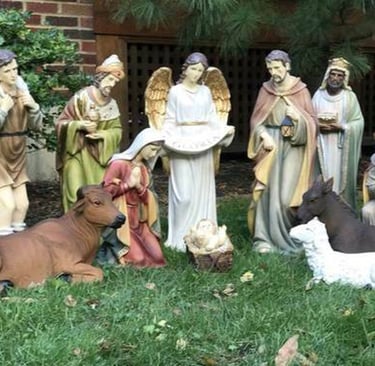
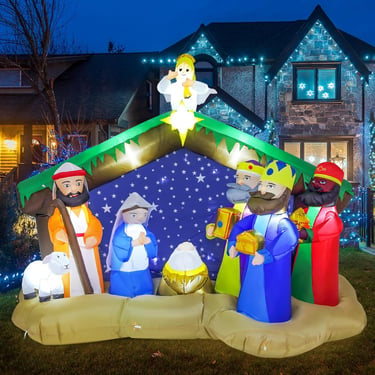

🧽 Best Materials for Outdoor Nativity Sets: What Actually Holds Up in the Real World?
Let’s get real—outdoor nativity sets aren’t just for show, they’re out there battling the elements: rain, wind, snow, and blazing sun. And unless you want your Holy Family to end up soggy, faded, or cracked by mid-December, the materials really matter. I've had nativity sets that looked beautiful in November and fell apart by Christmas. Here's what I’ve learned the hard way—and what experts recommend.
Weatherproof vs. Water-Resistant: Big Difference, Bigger Consequences
I used to think "water-resistant" meant safe to leave out in the snow. Rookie mistake. Water-resistant means it’ll hold up to a light drizzle, maybe a few cold nights. But prolonged exposure? You’re on borrowed time. Weatherproof, on the other hand, means it’s designed to be outside 24/7. If you live in a region with unpredictable weather (I’m looking at you, Midwest), don’t settle for less. For serious durability, look for products labeled explicitly as weatherproof or outdoor rated—manufacturers like Fontanini often specify these differences.
Material Breakdown: What Lasts and What Fails
Plastic: Affordable, lightweight, and usually waterproof. But cheap plastic gets brittle fast, especially under UV exposure. Higher-end molded plastic, like blow-molded figures from General Foam Plastics (now vintage but still circulating), can last for decades.
Metal: Surprisingly durable and striking in silhouette sets. But rust is the enemy. Look for powder-coated or galvanized options to avoid that sad, flaking look.
Resin: Resin gives a stone-like appearance without the weight. I love the detail you can get in resin figures, but they can crack in freezing temperatures. If you go this route, anchor them down and store them inside during harsh winter storms.
Wood: Beautiful and rustic, yes. But unless it’s properly sealed, it’ll rot fast. I’ve seen untreated pine warp and mold after one rainy week. Hardwoods like cedar or teak naturally resist decay, but sealing is still essential.
PVC: The quiet hero. Lightweight, flexible, weatherproof, and often UV-resistant. Great for silhouette-style nativities. If you’re DIY-ing, this material is forgiving and easy to cut or paint.
Live Somewhere Sunny? UV-Resistant Coatings Are Non-Negotiable
Fading isn’t just cosmetic—it can make a $300 nativity look dollar-store cheap after one season. If your nativity will bask in all-day sun, UV-resistant paint or fade-proof coatings are essential. You can also apply a clear outdoor polyurethane (with UV inhibitors) to extend the life of painted or resin pieces. Krylon and Rust-Oleum both make sprays specifically for sun protection.
Why Some Woods Rot (and How You Can Stop It)
It’s not just about wood type—it’s also where the wood touches the ground. Moisture from grass or soil accelerates decay. Elevate your nativity on pavers or bricks, and always seal wood with a high-quality marine varnish or exterior-grade polyurethane. And don’t forget to reseal annually.
DIY Sealing & Preservation Tips (Learned the Hard Way)
I once spent a weekend reviving a warped wooden Joseph with three coats of marine-grade sealant. Worth it? Absolutely. Here’s what works:
Lightly sand surfaces before sealing to help products adhere.
Use a foam brush for even application.
For painted sets, apply a clear UV-protectant sealer to lock in the color.
Don’t forget to seal the bottom! Water damage usually starts from the ground up.
When in doubt, cover or store during bad weather. Even the best materials benefit from a little TLC.
The truth is, even the most beautiful nativity set won’t last unless it’s made from the right stuff—or cared for like it is. If you're investing in an heirloom piece, go for materials that are proven to withstand your climate.
It’s worth the effort. Because there’s nothing quite like seeing your nativity glowing strong on Christmas Eve—weather be damned.
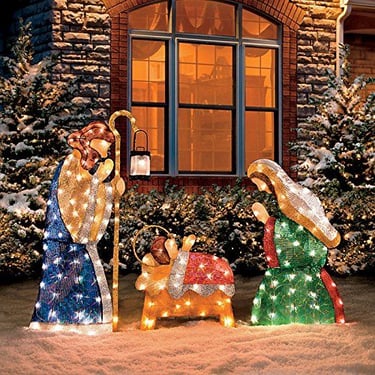

💡 Outdoor Nativity Lighting Options: How to Make It Shine Without Losing Your Mind (or Blowing a Fuse)
Let’s talk lighting. Because an outdoor nativity without lighting is just… sad. If you're going through the trouble of setting up Mary, Joseph, and the whole crew in your front yard, they deserve to be seen—even after the sun goes down. Over the years, I’ve tested just about every lighting setup—from the painfully dim to the blindingly over-the-top—and here’s what I’ve learned about what actually works (and what just wastes your time or electricity).
Backlit Silhouette Nativity Sets: Stunning Simplicity
If you're using a silhouette nativity set (usually PVC or metal), backlighting can turn a flat display into a glowing statement piece. I once used a single warm-white floodlight behind my silhouette nativity and neighbors literally slowed down to admire it. That gentle halo effect? Absolutely beautiful—no light strands, no fuss, just ambiance. Look for LED floodlights with adjustable brightness which are weatherproof and dimmable.
LED Spotlights vs. String Lights: It Depends on the Mood
I've tried both, and they serve different purposes.
LED spotlights: Best for dramatic, focused lighting. Want Baby Jesus to be the focal point? Spotlight him. These are cleaner, safer, and far more efficient than old-school halogens. Plus, they don’t tangle.
String lights: Great for outlining structures (like a wooden stable) or adding sparkle to trees around the scene. But don’t go overboard—this isn’t Vegas. Stick with warm white or soft colors to keep it reverent rather than carnival.
If you want your display to feel magical without shouting, combine the two: spotlight the figures and use string lights to frame the space.
Solar-Powered Nativity Lighting: A Win (With Caveats)
I love the idea of solar lighting—no cords, no energy bill spike, and no risk of tripping over wires. But here’s the thing: solar lights only work well if they get direct sunlight during the day. If your nativity set is shaded or you live in a cloudy climate, you’ll get a weak glow at best. I learned this the hard way after placing a solar-lit angel in the shadow of a pine tree. She glowed for… maybe 20 minutes.
If you’ve got the sun exposure, go for solar. Just check product reviews carefully—some "solar" lights barely hold a charge in December.
Timers and Smart Plugs: The Unsung Heroes of Sanity
You don’t need to crawl around unplugging cords every night like it’s 1999. Use outdoor-rated timers or, better yet, WiFi smart plugs to automate everything. I set my lights to come on at dusk and turn off at 11 p.m.—no effort required. Smart plugs like Kasa’s outdoor WiFi plug even let me control everything from my phone (and yes, I’ve totally turned them off from bed more than once).
Bonus: Smart plugs help you track energy usage and prevent overloads, which can be a real risk during the holidays.
Safety First: Moisture, Cords & Common-Sense Lighting
Let me be blunt: outdoor lighting can be dangerous if you’re careless. Every year, people end up with blown circuits—or worse—because of a few easily avoidable mistakes:
Always use outdoor-rated extension cords and lights.
Keep plugs off the ground and away from puddles. I use upside-down flower pots to elevate connections.
Don’t daisy-chain a dozen strands together unless the manufacturer says it’s okay.
Never use indoor lights outside. Just… don’t.
Check for frayed wires or cracked bulbs—especially on older sets.
At the end of the day, your nativity lighting should feel like an extension of the story you’re telling—not a frustrating tangle of wires and burnt-out bulbs. Light it well, and even the simplest nativity scene becomes something sacred, peaceful, and inviting.
Just remember: less is often more, but a little glow goes a long way.
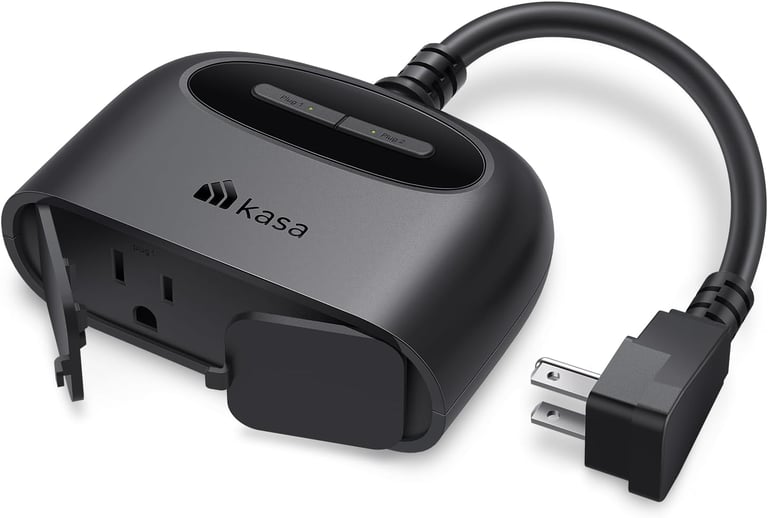

📍 Where to Place Your Nativity Scene: Making It Meaningful and Practical
There’s a moment each December when I drag the nativity set out of storage and stare blankly at the yard. “Where do I even put this?” It sounds like a small decision—until you’re out there in freezing wind, trying to hammer a stake into half-frozen dirt while wondering if anyone can even see the Holy Family from the road.
So here’s what I’ve learned after years of trial, error, and at least one flying Wise Man during a snowstorm.
Front Yard, Porch, Roofline, or Garden? It Depends on Your Setup (and Your Statement)
Front yard: This is the classic spot—and for good reason. It's visible, central, and can be scaled up or down. I recommend placing it slightly off-center to avoid looking rigid.
Porch: Great for smaller or more delicate sets (especially wood or resin). It adds intimacy, like the Holy Family is part of your home. Bonus: more protection from weather.
Roofline: A bold move. I’ve seen this done with lightweight silhouette nativities and it’s stunning—but make sure your roof can safely support it and it’s securely anchored.
Garden or landscape beds: Nestle your nativity among evergreens or low shrubs for a natural frame. This works beautifully with wooden or silhouette sets, especially when paired with soft lighting.
The real question is: What do you want people to feel when they see it? Reverence? Joy? Simplicity? Let that guide your placement.
Visibility Without Blocking Foot Traffic (or Annoying the HOA)
I once made the mistake of setting up our life-size plastic nativity right near the walkway. Not only did it crowd visitors, but one of the shepherds got tripped over—and cracked. Lesson learned.
Keep the main view (from the street or sidewalk) clear and unobstructed, but don’t block natural walking paths or delivery routes. Also, if you're in a community with HOA rules, check guidelines on religious displays—some can be surprisingly specific.
Pairing with Other Decorations Without Visual Clutter
This one’s tricky. It’s tempting to throw everything into your display—snowmen, reindeer, candy canes, Santa inflatables. But if you want your nativity to stand out, let it breathe. The message of the manger gets lost if it's wedged between a neon sleigh and twelve light-up penguins.
Try this instead:
Place the nativity in its own “zone”—like near a tree, garden bed, or corner of the lawn.
Keep nearby lighting warm and subdued.
Use natural materials (hay bales, wood stumps, lanterns) to create cohesion and soften modern elements.
Safe Staking and Anchoring for Wind and Snow Zones
If you’ve ever chased a runaway angel across the lawn during a windstorm, you know the importance of anchoring. In snow-prone or windy regions, this is non-negotiable.
Here’s what’s worked for me:
Use metal garden stakes or rebar for heavier sets. Plastic ones snap.
Anchor inflatables with weighted sandbags inside the base in addition to the standard tethers.
For wooden or silhouette sets, drive stakes into the ground and zip-tie pieces to them.
If placing on hardscape, use heavy outdoor planters or cement blocks behind the set, hidden with hay or fabric.
Snow drifts can also cover smaller nativity pieces—elevate delicate parts or opt for larger, high-contrast colors to keep things visible.
Strategic Elevation and Backdrop Ideas That Make All the Difference
Elevation = visibility. I started elevating our manger scene on a wooden pallet base, and it changed everything. People could finally see the baby from the road, even through snowbanks.
Try:
A wooden crate, deck box, or hay bales as a base.
Backdrops made from barnwood, lattice, or PVC frames draped with dark fabric or burlap.
Natural surroundings—like evergreens, hedges, or even a garden arch—can add height, depth, and drama.
Bonus: a solid backdrop can also block wind, helping your display stay upright and focused.
Placing your nativity scene isn’t just about logistics—it’s about storytelling. Where you place it shapes how it’s received. Is it tucked away like a quiet reminder? Center stage like a beacon of hope? However you choose, make it intentional. And make sure Baby Jesus stays anchored—I can confirm from personal experience, he’s not easy to find in the snow at midnight.
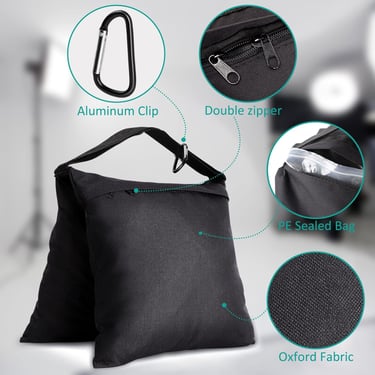

💰 Budget-Friendly Outdoor Nativity Displays: Beautiful Doesn’t Have to Mean Expensive
Let’s be honest—some of those outdoor nativity sets cost as much as a plane ticket to Bethlehem. I remember shopping for our first set and being hit with sticker shock. But here's the good news: you don’t have to spend a fortune to honor the Nativity story in your yard. Whether you're just getting started, decorating on a tight budget, or outfitting a church lawn, there are smart, creative, and even meaningful ways to keep it affordable.
Affordable Starter Sets Under $100
Yes, they exist—and no, they don’t have to look like dollar-store disasters. You can find decent-quality, weather-resistant nativity sets for under $100, especially if you’re okay with smaller sizes or silhouette styles.
Look on Amazon, Walmart, and Wayfair—search terms like "outdoor nativity set under $100" or "PVC nativity scene."
Brands like Holiday Time and Blow Molded Plastics (if you can find used vintage pieces) often sell complete starter sets at approachable prices.
Consider flat-pack silhouette sets—easy to store, lightweight, and usually weatherproof.
No, they won’t be life-size or museum-quality, but they’ll get the message across—and sometimes that’s all you need.
DIY Nativity Scene Ideas: Pallets, PVC, and a Little Faith
There’s something powerful about building your own nativity display. A few years ago, I cobbled one together from a leftover shipping pallet and a piece of burlap. It wasn’t fancy, but it was ours—and it meant more to me than any store-bought set.
DIY Options:
Pallet wood: Create a rustic stable or silhouette cutouts using jigsaws and stain. Free wood = major savings.
PVC pipe: Build a simple structure or even frame human-sized figures. Lightweight, affordable, and customizable.
Yard signs or printables: Use waterproof printed graphics mounted on coroplast or foam board—budget-friendly and surprisingly impactful.
Tips for Finding Post-Christmas Sales (Gold-Star Saver Tip)
This one’s for the patient planners. Right after Christmas, stores practically give away holiday decorations—including nativity sets.
Target, Michaels, Lowe’s, and Hobby Lobby often mark down decorations by 50–90% after Dec 26.
Sign up for store emails in advance and keep your eyes peeled online—some sales go live on Christmas night.
Check Facebook Marketplace, OfferUp, or local church rummage sales in January—people often donate or sell decorations in bulk.
I once scored a $250 life-size nativity for $40 just by checking Craigslist on New Year’s Day. Worth every minute.
Renting vs. Buying for Churches and Events
If you’re decorating for a one-time event or a short church display, renting a nativity might be smarter than buying.
Check local theater prop houses or church supply stores—many rent nativity props for a week or month at a fraction of the cost.
Bonus: No storage stress. Just return it after Christmas.
But if your congregation plans to use it annually, investing in a durable set will pay off over time—especially if shared between nearby churches or stored well.
Where to Find Affordable Life-Size Options
Life-size doesn’t have to mean luxury price tag. Here’s where I’ve found the best deals:
Factory direct websites like Outdoor Nativity Store or [General Foam Plastics (archived)** via eBay or Etsy] often have bundles or discount sets.
Facebook Marketplace and estate sales are treasure troves. People often sell full nativity sets (sometimes hand-painted!) for under $100.
DIY life-size: Use plywood cutouts or painted cardboard with waterproofing spray. Add stakes or frames for support. Surprisingly doable—and very personal.
Bottom line? A meaningful nativity display doesn’t require a maxed-out credit card or a professional lighting crew. With a little creativity and planning, you can create a display that honors the story—and maybe even becomes part of your family tradition.
And hey, if you’ve built your own or found a killer deal, I’d love to hear about it. Some of the best nativity setups I’ve seen didn’t come from catalogs—they came from people who made it personal.
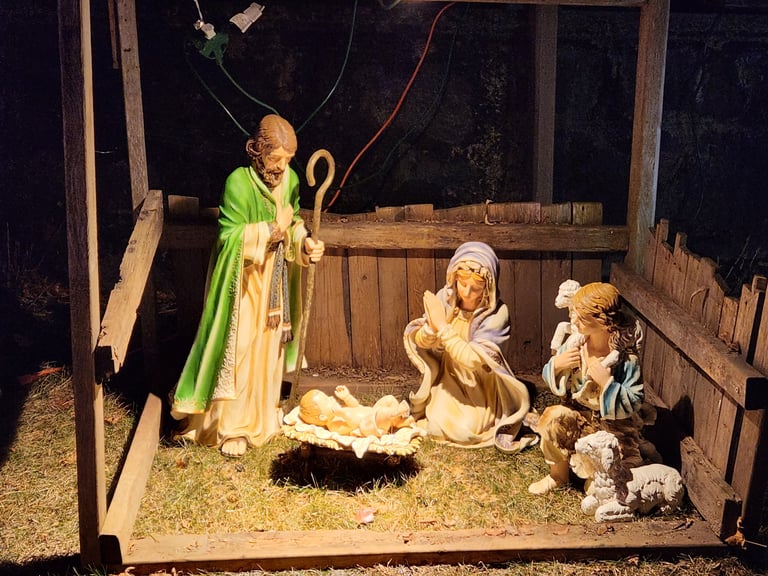

🔗 Premium & Life-Size Nativity Sets Worth the Investment
Let’s be clear: a premium nativity set isn’t just another Christmas decoration. It’s a statement. A centerpiece. Sometimes even a family heirloom in the making. I didn’t fully appreciate this until I saw a Fontanini life-size nativity outside a small chapel in New Mexico—spotlit against the adobe walls, snow falling around it—and it stopped me cold. That wasn’t just festive. That was sacred.
If you're ready to invest in a display that will last for decades (and maybe make the neighbors pause in admiration), here’s what you need to know—and what’s actually worth the splurge.
High-End Nativity Brands That Deliver on Quality & Beauty
These brands consistently rise to the top for craftsmanship, weather resistance, and timeless aesthetics:
Fontanini – Known for their incredibly detailed, Italian-made resin figures. Their life-size outdoor collection is breathtaking and surprisingly durable for year-round display.
Teak Isle – Specializes in marine-grade PVC silhouette sets. Their pieces are minimalist but elegant and stand up to just about any weather condition.
Outdoor Nativity Store – Offers both silhouette and full-color traditional sets, all made in the USA with UV-resistant materials. Their designs are subtle, spiritual, and sturdy.
Joseph’s Studio – Gorgeous resin and stone-mix figures with hand-painted detail. They offer smaller sizes too, but their 27-inch and 39-inch collections are especially good for semi-life-size displays.
These sets don’t just “look nice.” They evoke something. Reverence. Warmth. A reminder of what Christmas actually is.
Custom-Made Wooden and Resin Nativity Sculptures
If you want something one-of-a-kind, commissioning a woodworker or sculptor might be the way to go. I've seen handcrafted wooden stables made from reclaimed barn wood that felt like they belonged in Bethlehem. And carved resin figures from local artisans that carried more soul than anything mass-produced.
Sites like Etsy, CustomMade, or local Christian art festivals are great places to find (or commission) custom work.
Consider regional artists—especially in the Southwest or Appalachia—who craft nativity sets in wood, clay, or ceramic using traditional methods.
Just be sure to request outdoor-grade sealants or finishes if the set will live outside.
Yes, you’ll pay more—but you’ll also be supporting craftsmanship and preserving a story that will last long after the season ends.
Commercial-Grade Sets for Churches, Schools & Public Spaces
Large institutions need nativity sets that are visible, durable, and secure—especially when on display for weeks in public areas.
Life-size blow mold figures (like the now-rare General Foam Plastics line) are still beloved by many churches and can often be sourced secondhand.
Fiberglass nativity sets—used by parks and cathedrals—offer incredible realism and strength. Companies like Design Toscano and Bronner’s carry these types.
Check with vendors who specialize in religious or seasonal commercial decor, like Seasonal Displays Inc. or Kincaid Displays.
These sets are built to withstand foot traffic, weather, and the test of time. Perfect for community gatherings, living nativity walk-throughs, or church lawns that become pilgrimage sites in December.
How to Store & Maintain Premium Nativity Sets (So They Last Decades)
If you’re dropping serious money on a nativity set, proper storage isn’t optional. I learned this the hard way when mice turned one of my resin Wise Men into nesting material.
Tips to keep them pristine:
Clean before storing: Gently wipe down each piece with a damp cloth and mild soap. Let dry completely.
Wrap and pad: Use moving blankets or bubble wrap—not just newspaper (which can stain).
Climate matters: Avoid attics and garages with extreme temperatures. A dry basement or closet is ideal.
Label boxes by figure so you're not unwrapping a jumbled mess next year.
For silhouette or PVC sets, store flat in a storage bin or wall-hung rack to avoid warping.
If you're serious about preservation, consider custom storage crates or padded cases. Think of it like storing art—because that's what these sets often are.
Real-Life Examples of Large Nativity Displays That Inspire
The Passion Play Nativity in Eureka Springs, Arkansas: A massive, permanently installed nativity scene as part of the Christ of the Ozarks display. Awe-inspiring and spiritually moving.
Bronner’s Christmas Wonderland in Frankenmuth, Michigan: The largest Christmas store in the world, featuring several outdoor nativity setups, including international styles.
Cathedral of St. Paul in Minnesota: Their life-size nativity is breathtaking, set against the cathedral steps with ornate lighting and classical styling. A true example of how lighting and placement elevate even simple figures.
A premium nativity set isn’t just a purchase—it’s an investment in beauty, tradition, and meaning. Whether it’s the centerpiece of your family’s holiday or a quiet witness on the lawn of a church, it speaks to the season in a way few decorations can.
And trust me—when the snow starts falling and your carefully placed nativity glows under soft light, you won’t be thinking about the price tag. You’ll be remembering the story it tells.
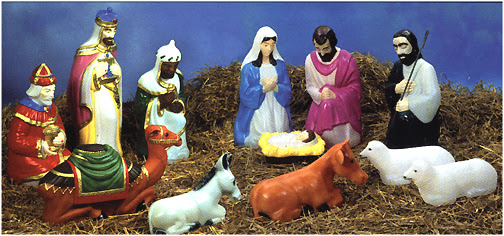

🧰 Setup, Storage, and Maintenance Tips: Protecting Your Nativity for the Long Haul
Setting up an outdoor nativity display should feel meaningful—not maddening. But if you’ve ever had a Wise Man topple in the wind, or opened your storage bin to find moldy hay and chewed plastic, you know that how you install and store your nativity can make or break the whole experience.
After a decade of trial and error (and one Joseph lost to a squirrel), here’s what actually works to keep your nativity set safe, clean, and ready for Christmas year after year.
Tools and Anchors You’ll Need for a Secure Setup
A stable setup is non-negotiable—especially if you live somewhere with winter wind or heavy snow. I keep a simple setup kit in a labeled tote, which includes:
Rubber mallet (for staking without splintering wood or cracking plastic)
Heavy-duty metal garden stakes or rebar (much sturdier than plastic ones)
Zip ties and bungee cords for added stability
Sandbags or weights if you're placing figures on hardscape or uneven ground
Cordless drill + weather-resistant screws (for wooden bases or pallet-style stables)
For silhouette or PVC nativity sets, I screw them to a small wooden frame weighted with bricks—zero wobble, even in December storms.
Waterproofing and Covering Tips for Long Winters
Even “outdoor” sets need protection—especially in places with freezing rain, snow, or sleet.
Spray wooden sets with marine-grade sealant before the season starts.
For resin or plastic pieces, apply a clear UV-protective spray to help prevent sun bleaching.
If your set isn’t weatherproof, consider building a simple lean-to or stable with a sloped roof to shed moisture.
During major snowstorms or heavy rain, toss a breathable waterproof tarp (like a grill cover or tent rainfly) over the entire display overnight—secure it with clamps, not rope, to avoid shifting or choking off airflow.
Moisture is your enemy—but so is condensation. Avoid wrapping pieces in plastic if they’re still damp. That’s a recipe for mold.
Off-Season Storage Containers and Moisture Control
When the season’s over, how you pack your nativity can determine if it lasts five more years—or fails by next December.
What’s worked best for me:
Use plastic storage bins with gasket-sealed lids (like those from IRIS or Sterilite) to keep out water and pests.
Wrap each figure individually in clean towels, blankets, or foam padding. Newspaper can leave ink stains.
Drop in silica gel packets or DampRid containers to manage humidity inside storage bins.
Elevate bins off basement or garage floors with pallets or shelving. Avoid attic storage if temperatures swing wildly.
If you’re working with large, life-size pieces, consider rolling garment racks or wall hooks in a storage shed to keep tall figures upright and damage-free.
Preventing Animal and Pest Damage (Trust Me—It’s a Thing)
One year, a raccoon made a nest in our manger. Another year, squirrels chewed the cord on my LED spotlight. Lesson: animals love your nativity as much as you do—but for the wrong reasons.
Here’s how I’ve learned to stop them:
Avoid leaving hay or straw out after Christmas. It attracts nesting animals.
Use peppermint oil spray around cords and wooden bases to deter rodents naturally.
Elevate cords and plug connections off the ground using bricks or outdoor cable boxes.
For long-term storage, place a few mothballs or natural rodent repellents (like Fresh Cab) inside bins—just not directly on the items.
Cleaning Tips: How to Avoid Fading, Rust, and Long-Term Damage
Before you pack it all away—or when pulling it out next season—give your set some TLC.
For resin or plastic: Wipe with a damp microfiber cloth. Avoid harsh chemicals—gentle dish soap works best.
For wood: Dust off debris and lightly sand any rough patches before resealing for next year.
For metal: Clean off snow salt or dirt with a vinegar solution, dry thoroughly, and apply a rust-inhibitor if needed.
Never power wash! It might seem efficient, but it can destroy delicate paint, coatings, or seals.
To keep colors rich and avoid sun damage, use UV-blocking sprays like Krylon UV-Resistant Clear Acrylic or Rust-Oleum Painter’s Touch.
A well-maintained nativity set doesn’t just save you money—it lets you focus on what matters. Each year, as I unwrap the same hand-painted figures and set them gently on their platform, I’m reminded of the beauty of doing things with care and intention.
Protect the story you’re telling—and you’ll find it lasts longer than you ever expected.
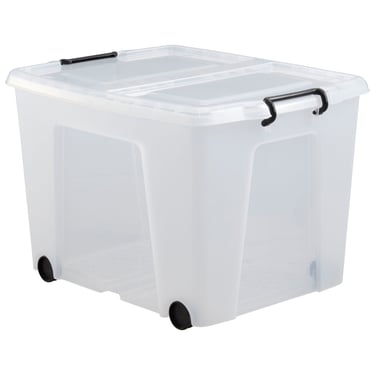

🧩 Accessorizing Your Nativity Scene: Enhancing the Story Without Losing the Focus
Once your core nativity scene is set up—Mary, Joseph, Baby Jesus—you might be tempted to call it done. But I’ve found that carefully chosen accessories can elevate the display from simple to sacred. It’s not about going bigger or flashier; it’s about enriching the story and setting the tone.
That said, it’s ridiculously easy to go from heartfelt to cluttered. (Yes, I once added two extra angels, a trio of oversized gift boxes, and a glowing donkey... and instantly regretted it.) So here’s how to enhance your nativity tastefully—with personality, purpose, and a bit of restraint.
Adding Angels, Wise Men, Shepherds, and Animals: Who Belongs and When?
Depending on your theological or traditional preferences, your nativity might start with just the Holy Family and grow as Christmas unfolds.
Angels: I always include at least one angel above or behind the stable—symbolically announcing the birth. Wall-mounted or silhouette angels work great if space is tight.
Shepherds: These humble characters bring a grounded, earthy feel to the scene. I like placing them slightly apart from the manger to suggest their journey.
Animals: A few sheep or a donkey nestled near the stable adds life and texture. Just avoid turning it into a petting zoo.
Wise Men: Technically, they arrive much later (Epiphany, Jan 6), so some families wait to add them. I usually place them at the edge of the display and “move” them closer each week—it’s a fun tradition, especially with kids.
If you're building your set slowly over the years (as I did), adding new figures each season keeps the tradition alive and meaningful.
Bethlehem Backdrops and Stable Structures: Frame the Scene with Purpose
The right backdrop transforms a collection of figures into a coherent, reverent display. It gives your nativity a sense of place—Bethlehem, not just your lawn.
Stable structures: Whether it's a simple wooden lean-to, a full barn-style build, or a minimalist silhouette frame, it anchors the scene and gives depth.
Backdrops: For silhouette sets, I’ve seen beautiful uses of dark blue or black cloth with painted stars. For traditional displays, consider wood fencing, privacy panels, or faux stone panels from home improvement stores.
PVC backdrops are especially weatherproof and easy to paint or stencil with stars, scripture, or silhouettes.
Bonus tip: A backdrop also hides cords, fences, or busy landscaping that could distract from the story.
Faux Hay Bales, Lanterns, and Path Lights: Thematic but Practical
These small touches can transform your display from ordinary to cinematic.
Faux hay bales (or sealed real ones) add a rustic, warm base. I put them in front of or around the stable to create elevation and visual interest.
Lanterns (battery-powered or solar) offer a gentle, reverent glow. I place them near the manger or in the hands of a shepherd figure.
Path lights leading up to the display can guide the eye and double as safety lighting for visitors.
Avoid real candles (fire hazard!) and check that any electrical items are rated for outdoor use. Safety first, always.
Integrating with Other Christmas Yard Decorations Without Creating Chaos
If you’ve also got reindeer, candy canes, or Santa inflatables in the yard—don’t panic. You can absolutely have fun and preserve the sacredness of the nativity.
Tips to balance both:
Physically separate your nativity from whimsical decorations. I use a different corner of the yard for Santa and friends, keeping the nativity in a quieter, spotlighted space.
Use consistent lighting tones—soft white or warm LED—to unify the look even if the themes differ.
Frame your nativity with natural elements (like pine garlands or wood arches) to help it stand apart visually.
Treat the nativity like the centerpiece—and everything else as background. That mindset helps a lot.
Avoiding Over-Clutter While Enhancing Visual Impact
It’s tempting to add everything—especially when you're proud of your pieces or just found a great deal at a post-Christmas sale. But more isn't always more.
Ask yourself:
Does this new item enhance the story?
Does it draw attention to the manger—or away from it?
Would someone unfamiliar with the story immediately understand the focus?
Use space and light as design tools. Let the Holy Family have breathing room. Use symmetry sparingly, and avoid crowding the scene with unrelated decor. Less truly is more.
Your outdoor nativity scene tells a story that’s lasted over 2,000 years. Every accessory, every spotlight, every stable beam can add to that narrative—or distract from it. Choose pieces that mean something, and let simplicity speak when it needs to.
And remember: sometimes the most powerful scenes are also the quietest.
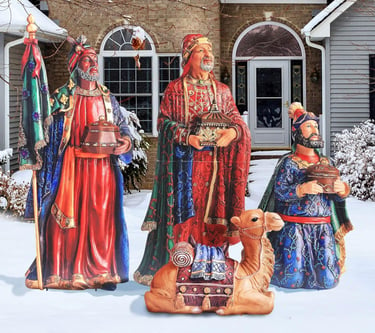

Where to Buy Outdoor Nativity Sets Online (and In Stores): My Go-To Picks, Cautionary Tales & Pro Tips
If you’ve ever typed “outdoor nativity set” into Google and immediately felt overwhelmed, you’re not alone. Between mass-produced plastic figurines, hand-carved heirloom sets, and inflatable Holy Families that look like they’ve had one too many candy canes… the selection is wild.
I’ve personally bought nativity sets from both big retailers and niche Christian artisans, and I’ve learned (sometimes the hard way) that where you buy matters almost as much as what you buy.
So let’s talk smart shopping—online and in person.
🛒 Top-Rated Online Stores I Trust
If I had to shortlist the most consistent, reliable online sources for outdoor nativity sets, here’s where I’d send a friend:
Outdoor Nativity Store – A faith-based company that specializes in American-made PVC nativity displays. Their designs are weatherproof, fade-resistant, and refreshingly reverent. I bought one of their silhouette sets for my parents and it’s held up flawlessly in Midwest winters.
Fontanini at The Catholic Company – For premium sets with Italian craftsmanship. Expensive? Yes. But it’s basically liturgical art. They also offer payment plans.
Teak Isle – They manufacture both consumer-grade and commercial-grade nativity scenes. Their stable structures and silhouette designs are especially popular with churches and civic displays.
Etsy – A treasure trove of handmade wooden, metal, and even 3D-printed sets. Just be sure to read reviews carefully and ask sellers about outdoor durability. I once found a rustic wood set from a small Kentucky craftsman that ended up being the star of our Christmas yard for years.
🏬 Big Box Stores vs Specialty Christian Retailers: The Showdown
I’ve stood in the holiday aisle at Walmart eyeing a $79 plastic nativity with skeptical curiosity. And I’ve spent over $300 at a local Christian bookstore without blinking.
Here’s the real breakdown:
Big Box (Walmart, Lowe’s, Home Depot, etc.)
✅ Affordable and widely available
✅ Easy returns if something arrives broken
❌ Mass-produced with less artistic detail
❌ Often seasonal and may sell out early
Christian Retailers or Church Supply Stores
✅ Faith-centered, meaningful designs
✅ Better craftsmanship and theology-conscious detail
❌ Pricier
❌ Slower shipping, especially close to Christmas
If you’re going for a classic full-scene display, I always recommend checking both. Sometimes you’ll find a surprisingly beautiful deal at Costco; other times, the extra money spent at a niche Christian shop is totally worth it.
📏 What to Check Before Buying (Trust Me, I’ve Learned)
Before you hit “Buy Now,” double-check these details—because outdoor decor is a whole different ballgame:
Dimensions: Online photos are so misleading. Check height, width, and scale. A “life-size” baby Jesus shouldn’t fit in your mailbox.
Materials: PVC and resin are most weatherproof; untreated wood or MDF won’t last outdoors unless sealed.
Warranty: Especially for premium sets, ask if they cover fade, breakage, or manufacturer defects. Some brands offer 1–5 years.
Weight: Light sets may need anchoring. Heavy sets might be a pain to move each year (been there… back still hurts).
Assembly: Do you need tools? Are instructions included? Pre-drilled holes? Ask before you buy.
🚚 Shipping & Return Policies (Especially for Large Displays)
Outdoor nativity sets aren’t just another Prime box—they’re often bulky, heavy, and fragile. Here’s what I always check:
Shipping cost: Free shipping on a $200+ nativity might not apply if it ships in two or three giant boxes.
Lead time: Some handmade or imported sets take 2–4 weeks. Plan ahead—October is prime time for ordering.
Return window: Look for at least 14–30 days after delivery, and confirm who pays return shipping (you often do).
Damage reporting: Take photos immediately upon unboxing. Some sellers require damage claims within 48 hours.
I once missed a return deadline by one day and got stuck with a warped stable that wouldn’t stand up straight. It became firewood by New Year’s.
Final Thought:
Where you buy your outdoor nativity set is more than a matter of convenience—it’s a reflection of your priorities. Whether you’re on a tight budget or splurging on a forever piece, choose a source that values both craftsmanship and the sacred story you’re telling in your yard.
Got a favorite place you’ve bought from or a lesson learned? Share it—I love swapping nativity stories (and I’ve got plenty).
📌 Outdoor Nativity Safety & Local Ordinances: Keeping It Legal, Safe, and Neighbor-Friendly
You’ve picked the perfect nativity set. You’re picturing it glowing peacefully in your yard, proclaiming “Joy to the World.” But before you start staking down shepherds and plugging in angels, let’s talk about the less-glamorous side of outdoor displays: safety and regulations.
Here’s what you need to know to stay on good terms with the law, your neighbors, and your electrical panel.
🏘️ HOA Rules and City Regulations to Watch For
Don’t get slapped with a violation letter the week before Christmas. Check these boxes before setting up your nativity scene:
Homeowners Associations (HOAs):
Some HOA communities have strict rules about:Yard displays (size, placement, and height)
Religious symbols (yes, some restrict them)
Seasonal display windows (e.g. only between Dec 1–Jan 10)
Lighting after 10 PM
✅ Pro tip: Call or email your HOA to clarify. Some are lenient if you ask first.
City or municipal codes:
Most cities allow religious displays on private property—but things get tricky on:Public sidewalks or medians
Noise (if your set plays music)
Light pollution rules
Fire safety spacing (especially if you use hay or wood)
✅ Check your city website or call the planning/zoning department.
⚡ Power Cords, Water, and Electrical Safety
Your beautiful nativity shouldn’t be a fire hazard. Use outdoor-rated equipment only, and take these precautions:
Use GFCI outlets to prevent electrical shock.
All cords, plugs, and lights must be weatherproof and labeled for outdoor use.
Elevate plug connections using bricks or a cord reel to avoid pooling water.
Seal connections with outdoor-rated electrical tape or waterproof cord covers.
Avoid overloading circuits—use extension cords with built-in surge protection.
Don’t run cords across sidewalks or walkways without proper covers.
✅ Checklist bonus: Do a daylight safety walk to look for tripping hazards, and a night inspection to check for flickers or exposed wiring.
🌬️ Anchoring Large Displays in Windy Conditions
Nativity sets look lovely—until a rogue gust sends the Holy Family tumbling down the driveway. Here’s how to secure your scene:
Stake everything—even lightweight plastic figurines.
Use tent stakes or rebar rods for PVC and silhouette sets.
For inflatables, secure all tie-down points and add sandbags inside if possible.
Place heavier figures upwind to block lighter ones.
If you live in high-wind zones, consider temporary removal during storms.
✅ Optional upgrade: Use landscaping bricks behind major figures to increase wind resistance without altering appearance.
🫶 Being Respectful of Neighbors While Sharing Faith
While outdoor nativities are a beautiful way to celebrate your beliefs, keep it peaceful (and neighborly) by:
Avoiding loud music loops that play 24/7—limit hours or use motion-activated sound.
Turning off lights overnight with a timer (between 10 p.m. and 6 a.m. is courteous).
Placing the display on your own property only.
Keeping it tasteful—avoid cluttered or cartoonish add-ons that might be taken as mockery.
✅ Tip: A well-placed nativity scene can start meaningful conversations with curious neighbors or passersby. Keeping it respectful helps ensure it's received as an invitation, not a confrontation.
🚨 What to Do in Case of Vandalism or Theft
Sadly, even religious displays aren't immune to Grinches. Here’s how to protect your nativity scene (and what to do if trouble strikes):
Install a motion-sensor spotlight or camera (like a Ring or Wyze Cam).
Anchor and tether pieces with metal wire or cable to deter grab-and-go theft.
Use “dummy” props in place of valuable or irreplaceable items.
Keep receipts and photos for insurance claims.
If something does happen:
File a police report (even for minor vandalism—it helps with community awareness).
Post in local neighborhood groups (like Nextdoor or Facebook) with a kind, non-accusatory tone.
Consider replacement protection if buying from high-end retailers—some offer loss or damage coverage.
✅ Heartening note: Many communities rally when faith displays are targeted—restorations, donations, and even local news support often follow.
Final Thought:
Setting up an outdoor nativity should feel joyful, not stressful. By staying informed and prepared, you’ll keep your display beautiful, safe, and welcome in the neighborhood—all while shining light on the true meaning of the season.
✅ Conclusion
Outdoor nativity sets aren’t just decorations—they're declarations. Whether you choose a simple silhouette or a sprawling, glowing Bethlehem village, these displays remind the world what Christmas is truly about.
With so many options—materials, sizes, lighting, and placement ideas—you’re not limited by budget or space. Just be sure to prep for weather, choose a style that speaks to your heart, and think about how your nativity fits into your overall Christmas display.
